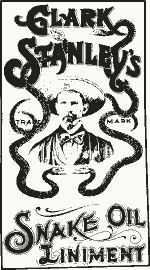Headlines and Shoulders Above the Competition: 6 Top Headline Techniques
By Jaco Grobbelaar on Thu, Aug 18, 2011 @ 07:42 PM

Guest Blogger—Ann Mullen
Are all headline swipe files just a bunch of snake oil?
I actually found a recent blog by Yaro Starak, “How To Write Award Winning Blog Headlines” at http://www.entrepreneurs-journey.com/7668/how-to-write-award-winning-blog-headlines/print/ that is an honest introduction to writing headlines you can use as a basis for your swipe file.
Since most people don’t have the time to read the whole article and want the quick fix, I am going to ditch Yaro’s explanations and get to the meat of the matter. You are welcome to read the whole enchilada yourself if you have time. I couldn't cover it all so I stuck to the top six.
A good headline is essential to getting your blog article in front of your audience. Your content, while very important, is not as important as the headline. Yaro admits that he, himself, just writes a headline without looking at a swipe file, but there are things that he has learned that make better headlines than others.
The “How” Headline
This is the most common sort of headline, including the “How To Do Something”. For example, “How to Potty Train Your Four-Year-Old Dog” or “How To Write Top Headlines”. Add that to your swipe file, just don’t overuse it.
The “Why” Headline
Yaro says that this headline opens the door to the person’s mind, but to find the answer the reader has to walk though. The idea is to create curiosity, but don’t answer the question in the headline. Why read it then? I use a lot of questions in both my headlines and articles because I am seeking dialog. A couple of examples are “Why Four-Year-Old Dogs Refuse To Be Potty Trained” and
“Why Write Killer Headlines?”
Other Questions
Questions with any other word than “Why” make good headlines as well. I used one recently—“What’s In Your Headline Swipe File?” which is a take-off on a credit card ad. Another good question would be “Is Your Four-Year-Old Dog Defying You?” Remember that you are expected to answer the question in your article.
The “Context Phrase: Headline”
This format has a few words followed by a colon and either a question or a statement. This allows you to be more specific before adding your headline. If you are looking for more zing use some power words in the context phrase. Here are some some examples I made up. “Old Dog, New Trick: Potty Train Your Four-Year-Old Dog” and “Explode Your Swipe File: How To Write Killer Headlines.”
The (Brackets) Headline
This headline is similar to the colon one, but with this one you highlight something by using the brackets to call attention to it. Here are two examples: “What Successful Dog Trainers Know (But You Don’t) and “Creating Killer Headlines (And Why You Want To)”.
The List Headline
This is one of the strongest formats, having been used well before computers were even invented. You do need to be careful not to over use this. You’ll find if you look at lists of headline swipe files that this is used in various forms from “ # of Tips”, “Top # of Methods”, “# of Steps” and “# of Questions”. Here are my examples, “A Step-By-Step Guide to Potty Training Four-Year-Old Dogs” and "6 Top Headline Techniques.”
Yaro has 9 more methods in his article, including such great ideas as don’t use passive voice or main stream phrases and it’s better to use shorter headliner. He also reminds writers to focus on their reader using “You” and “Your”.
BTW If any of you know how to potty train a four-year-old dog, please let me know.
Ann Mullen has been writing for more than half her life, much of that time actually being paid. You can read some of her musings at Media-Ann-Such.com.
References Yaro Suggests:
102 Proven Social Media Headline Formulas by Chris Garrett
How to Write Magnetic Headlines by Brian Clark
Share this
You May Also Like
These Related Stories
Headlines and Shoulders Above the Competition: 6 Top Headline Techniques


Headlines and Shoulders Above the Competition: 6 Top Headline Techniques
Fri, Feb 11, 2022 @ 05:54 PM
3
min read
Headlines: Where You Grab Them or You Lose Them


Headlines: Where You Grab Them or You Lose Them
Sun, Aug 14, 2011 @ 10:01 PM
2
min read
What's In Your Headline Swipe File?


What's In Your Headline Swipe File?
Tue, Aug 16, 2011 @ 09:44 PM
3
min read
.png?width=302&height=75&name=BVM%20Logo%20-%20transparent%20(1).png)


No Comments Yet
Let us know what you think